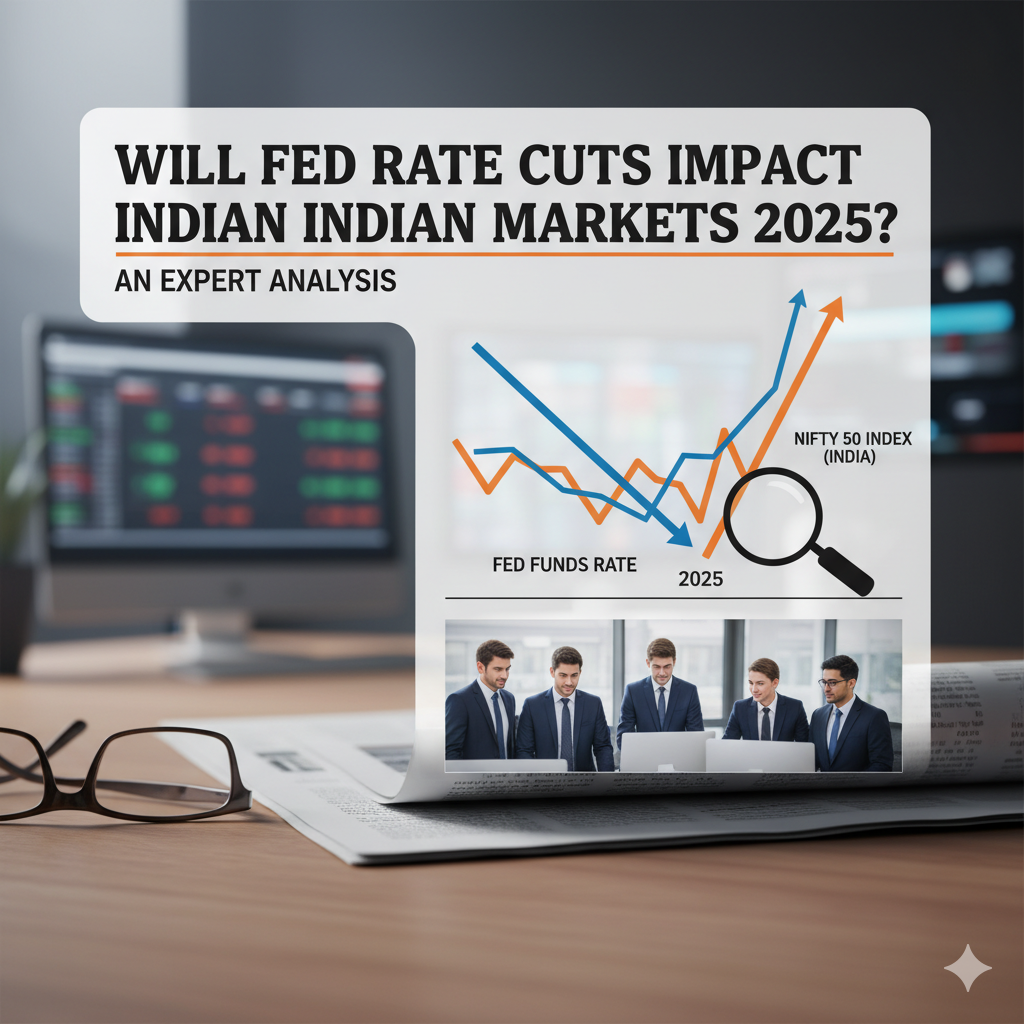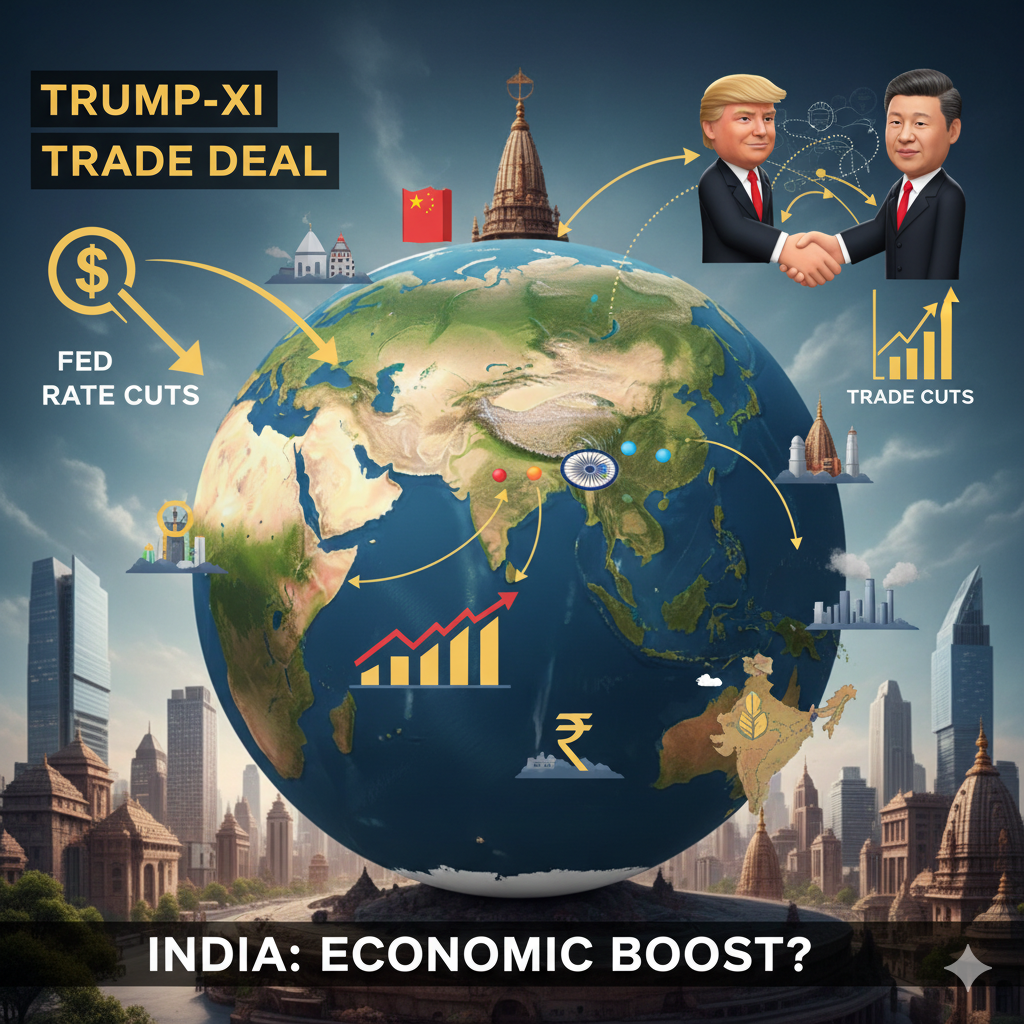The landscape of global finance is shifting rapidly in 2025 as the outcomes of recent FOMC meetings continue to set new precedents.
With the Federal Reserve aggressively cutting rates amid evolving economic challenges, both the US and Indian markets are undergoing significant transformations. This article examines how federal reserve interest rates adjustments made during the latest FOMC meetings are reverberating through global markets, impacting indices like the Dow Jones and reshaping investor sentiment across continents.
In this in-depth analysis, we explore the strategic implications of the Fed’s rate cuts, the domino effect on international markets, and the unique dynamics within Indian markets. Along the way, key phrases—federal reserve interest rates, Dow Jones, and FOMC meeting—appear repeatedly to help you grasp the multi-layered impact of these decisions on the global economy.
Table of Contents
- Understanding FOMC Meetings and Federal Reserve Interest Rates
- The Impact of Fed Rate Cuts on Global Markets
- Ripple Effects on the US Market and Dow Jones
- How US Rate Cuts Are Reshaping Indian Markets
- Case Studies: Market Reactions and Investor Behavior
- Future Outlook and Predictions for 2025
- Frequently Asked Questions
1. Understanding FOMC Meetings and Federal Reserve Interest Rates
At the heart of US monetary policy lies the FOMC meeting, a critical event where policymakers decide on the trajectory of federal reserve interest rates. The Federal Open Market Committee convenes regularly to review economic conditions and determine the appropriate stance of monetary policy. These meetings have far-reaching implications—not only for domestic economic health but also for global market stability.
In 2025, the Fed’s latest FOMC meetings have been characterized by a series of aggressive rate cuts designed to stimulate economic activity amid slowing growth and persistent inflationary pressures. By lowering federal reserve interest rates, the Fed aims to make borrowing cheaper, boost consumer spending, and support the broader economy.
Historically, decisions made at FOMC meetings are closely watched by market participants around the world. Investors rely on these decisions to gauge future economic conditions, adjust portfolios, and reposition assets. The recent dovish tone has boosted market sentiment, replacing uncertainty with cautious optimism.
2. The Impact of Fed Rate Cuts on Global Markets
The recent cycle of rate cuts by the Federal Reserve has influenced not only US economic indicators but has also sent shockwaves through global markets. Lower federal reserve interest rates typically lead to a weaker US dollar, making exports more competitive and encouraging capital outflows into emerging markets. This trend is particularly evident in India, where lower borrowing costs are fueling growth in both the corporate and consumer sectors.
Investors worldwide closely monitor every FOMC meeting for clues on the Fed’s future moves. A dovish tone—indicating a commitment to continue lowering federal reserve interest rates—has bolstered market sentiment and spurred a flight to riskier assets. Global equity markets have recorded increased volatility and significant gains in emerging market indices following the Fed’s recent announcements.
Furthermore, lower federal reserve interest rates have spurred discussions about inflation and the sustainability of current growth patterns. As central banks worldwide adjust their policies in response to US actions, the interconnected nature of global finance becomes even more evident.
3. Ripple Effects on the US Market and Dow Jones
In the United States, the consequences of the Fed’s rate cuts are reflected directly in major equity indices, notably the Dow Jones. Traditionally, the Dow Jones Industrial Average is seen as a barometer of economic health, capturing the performance of some of the largest and most influential companies in the country.
Following the latest FOMC meeting, the Dow Jones surged by over 2% within hours of the announcement, as lower federal reserve interest rates eased borrowing costs for businesses. This boost has elevated investor confidence and spurred increased trading volumes across sectors such as technology and consumer discretionary.
Analysts expect further upward pressure on the Dow Jones as the Fed signals its readiness to continue with accommodative policies at upcoming FOMC meetings. Historical data shows that sustained periods of low federal reserve interest rates have often been conducive to strong equity market performance.
4. How US Rate Cuts Are Reshaping Indian Markets
The ripple effects of the Fed’s policy decisions extend far beyond the United States. In India, lower federal reserve interest rates and a dovish tone at recent FOMC meetings have led to significant capital inflows. Investors seeking higher yields have redirected funds into Indian equities and bonds, bolstering market sentiment and driving asset price surges.
Indian companies, particularly in technology and manufacturing, are benefiting from easier access to international financing. The synchronization of US indices like the Dow Jones with Indian stock exchanges is becoming increasingly apparent, as Indian markets adjust their monetary policies in response to the global environment. This has prompted domestic investors to recalibrate their portfolios, capitalizing on the opportunities presented by global capital flows.
5. Case Studies: Market Reactions and Investor Behavior
Case Study 1: US Market Rally Post-FOMC Meeting
Following the most recent FOMC meeting, the US market rallied sharply. The Dow Jones surged by over 2% in just a few hours after the announcement of lower federal reserve interest rates, with technology and consumer discretionary sectors leading the charge. Analysts attributed the rally to expectations of sustained monetary easing and the potential for increased corporate profitability.
Case Study 2: Capital Inflows into Indian Markets
Indian markets recorded record foreign inflows as global investors sought better yields. Benchmark indices in India surged as investors responded to the benefits of lower US federal reserve interest rates. Indian financial institutions noted significant increases in foreign portfolio investments, underscoring the influence of global rate cuts on emerging market dynamics.
Case Study 3: Divergent Sectoral Impacts
In the US, while technology and consumer sectors flourished, the financial sector experienced mixed effects due to compressed net interest margins. Yet overall, the positive sentiment from the latest FOMC meeting has led to a balanced market performance. This divergence, visible in indices like the Dow Jones, highlights the complex effects of sustained low federal reserve interest rates on different sectors.
6. Future Outlook and Predictions for 2025
Looking ahead, experts predict that the trend of lower federal reserve interest rates will persist throughout 2025. The Fed’s commitment to an accommodative monetary policy is expected to support continued growth in the Dow Jones and drive capital flows into emerging markets like India.
Key Predictions:
- Sustained US Market Growth: Historical trends suggest that prolonged periods of low federal reserve interest rates support robust performance in equity markets, including the Dow Jones.
- Increased Capital Flows: Investors will likely seek higher yields in emerging markets, providing strong support for Indian equity and bond markets.
- Sectoral Realignments: Technology, consumer discretionary, and infrastructure sectors are expected to benefit the most, even as financial institutions navigate thinner margins.
- Global Policy Coordination: As central banks worldwide adjust their policies in response to US moves, coordinated global economic efforts may help smooth out market volatility.
- Policy Innovations: With every FOMC meeting, new regulatory and monetary policy innovations will continue to reshape global finance.
7. Frequently Asked Questions
Below is a summary of common questions about the impact of Fed rate cuts, federal reserve interest rates, the Dow Jones, and the latest FOMC meeting decisions:
| Question | Answer |
|---|---|
| What is the significance of the recent FOMC meeting? | The latest FOMC meeting was significant as the Fed cut federal reserve interest rates to stimulate growth amid slowing domestic activity, affecting both US and global markets. |
| How do changes in federal reserve interest rates affect the Dow Jones? | Lower federal reserve interest rates reduce borrowing costs, boost corporate profits, and elevate investor sentiment, often leading to a rise in the Dow Jones. |
| Why are global markets sensitive to FOMC meeting decisions? | Decisions made during FOMC meetings influence capital flows and exchange rates worldwide. Lower federal reserve interest rates can weaken the US dollar and prompt investors to seek opportunities in emerging markets. |
| How are Indian markets impacted by US rate cuts? | Lower US federal reserve interest rates and a dovish tone at recent FOMC meetings have led to significant capital inflows into Indian markets, boosting equity prices and economic activity. |
| What role does the Dow Jones play in reflecting Fed rate cuts? | The Dow Jones is a key indicator of US economic health. Its performance reflects how companies benefit from lower federal reserve interest rates and has shown resilience following recent FOMC meeting announcements. |
| How are institutional investors responding to low federal reserve interest rates? | Institutional investors are repositioning their portfolios to seek higher returns in emerging markets. The environment of low federal reserve interest rates and improved liquidity in indices like the Dow Jones are driving these shifts. |
| What is the future outlook amid these policy shifts? | Analysts expect sustained low federal reserve interest rates to support US market growth, encourage global capital inflows, and drive further economic coordination across markets, as confirmed by ongoing FOMC meeting signals. |
Conclusion
In 2025, the effects of the Federal Reserve’s rate cuts are being felt across the global financial landscape. As demonstrated by recent FOMC meetings and the lowering of federal reserve interest rates, both the Dow Jones and emerging markets like India are experiencing significant shifts in investor behavior. With sustained low rates fostering increased capital flows and strategic investments, staying informed on each FOMC meeting and monitoring key indicators is crucial for navigating these dynamic times.
Engage with our community, subscribe for the latest updates on federal reserve interest rates, Dow Jones trends, and insights from each FOMC meeting. Share your thoughts and join us in exploring how these monetary policy decisions are reshaping both US and Indian markets.







